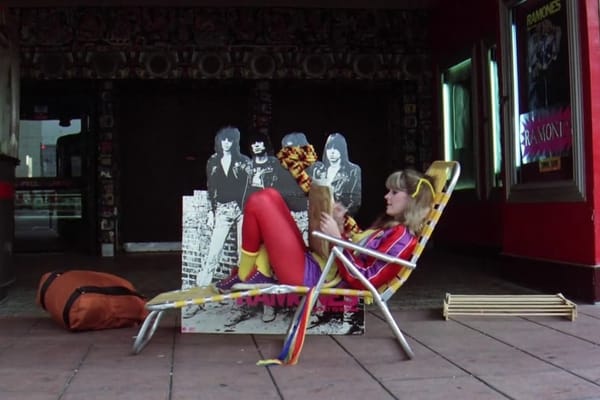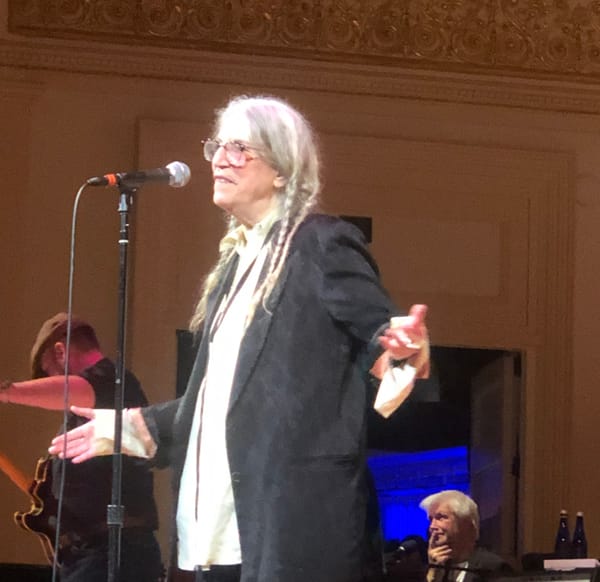All the Way with Lenny Kaye
Keep the Faith and the Faith Will Always Keep You.
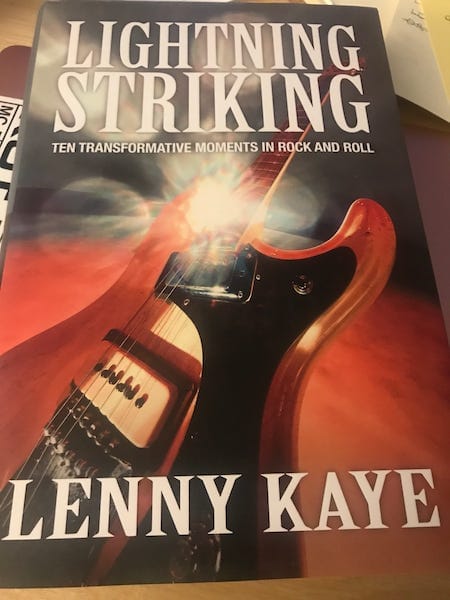
You don’t have to know Lenny Kaye, only know of him as Doc Rock, our trusted curator, guardian of the grooves, keeper of the eternal flame, to realize that he’d never write a traditional memoir that centers himself. But I have to admit I was initially the tiniest bit disappointed to open an advance copy of his new book, Lightning Striking, and discover that instead he’d chosen to exercise the same muscle that made his Nuggets compilation into the scene/sound/generation* defining sacred text it unintentionally became.
*by “generation” I don’t mean the conventional definition of a group of people strictly defined by eras or dates, but more like defined by an idea or ethos, like the Beat Generation
It’s a trait developed as the result of analysis and distillation, being able to survey a wide swatch of information and have the ability to reach in and arrange or select or curate a collection or a moment or even just (just!) a feeling. Nuggets* was all of these things and it also served as a catalyst and uniting force that was immensely valuable at locating fellow travelers who had a similar mindset and bonding them together, the other people who had the same way of looking at music, an appreciation for a set of defined (or undefined) qualities. A sound, an echo, an effect, a vocal turn of phrase, a production style (or lack thereof), a willingness to experiment--these are all some of the types of buckets I’d organize the bands on Nuggets into.
*Nuggets deserves its own essay but if you’re not familiar with it and you subscribe to this newsletter my advice is to track it down or look at the track listing online somewhere. I guarantee you’ll look at it (or listen to it) and go “oh.”
The subtitle of Lightning Striking is “ten transformative moments in rock & roll.” WIthin that, Lenny uses cities and specific time periods as an organizational principle, as opposed to using bands or songs or records. So he takes you back to Cleveland in 1952, Memphis in 1954, Liverpool in 1962, New York City in 1975, London in 1977, Seattle in 1991 - six of the ten moments. The one s-t-r-e-t-c-h is Los Angeles1984 / Norway 1993 where he’s uniting metal/hair metal/glam metal and HE’S NOT WRONG (Lenny is never wrong) but it breaks the purity of the governing organizational conceit. But while this bothers me it is also a very good example of what the book does its best at.
What Lenny Kaye does better than just about anyone else is the ability to keep an eye on the macro and the micro when examining the history of popular music. Yes, he has degrees in American history but that definitely does not make one automatically able to hone one’s vision in this manner and be able to explain it succinctly. Lenny knows everything that’s going on, and what went on before, and before that. He isn’t writing a book he has to go research. This is probably why the other element Lenny brings to this work (and always has) is the ability to present the facts in a way that makes you understand their importance. He gives you a reason to care.
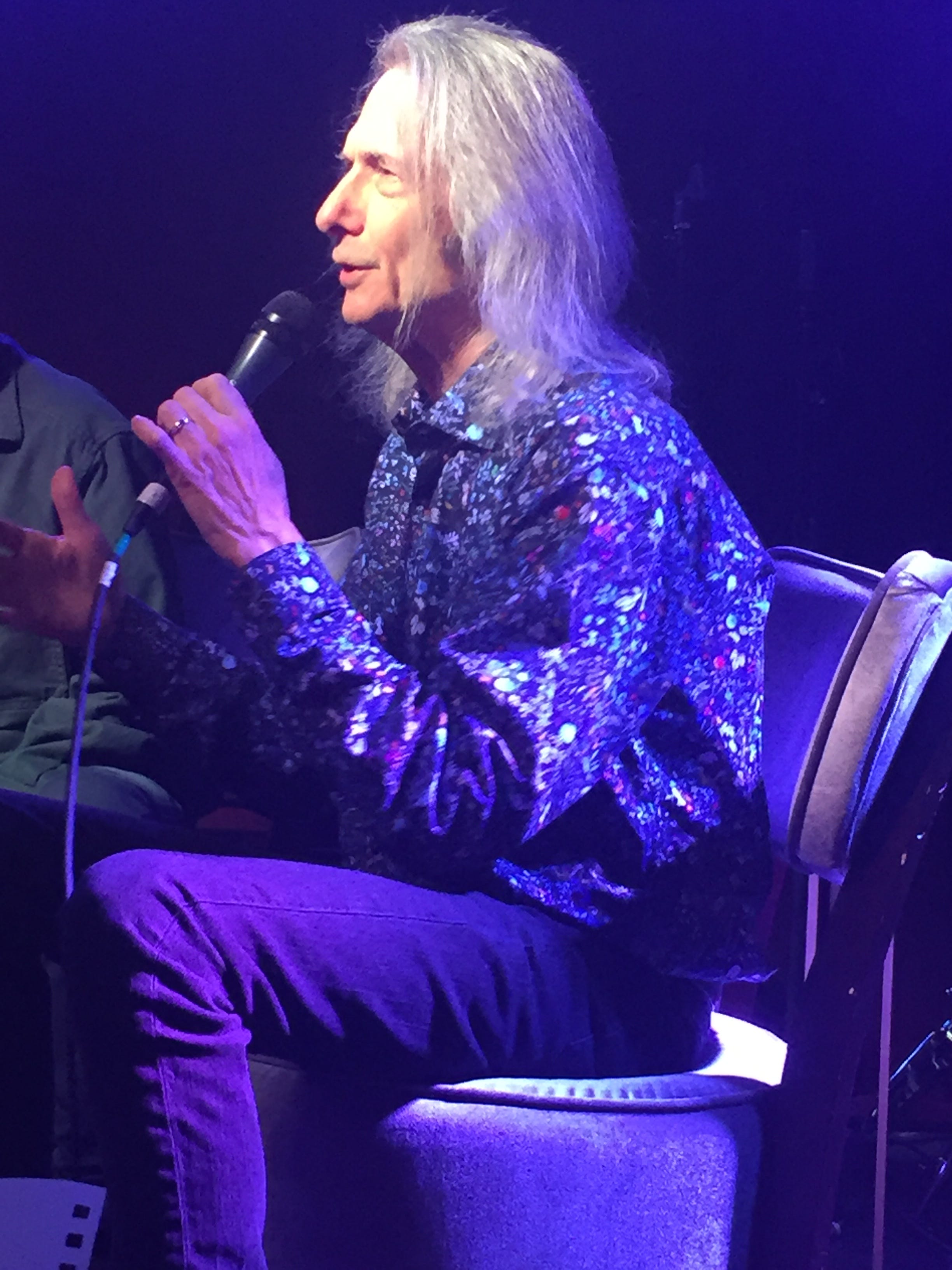
But more than anything, it’s always a delight to read and learn from someone who knows their shit. He sees the direct line from the Sonics to grunge and can dotted-line-link what happened in Minneapolis in the mid-80s to Green River and the Melvins, plus point out that all the 78s that were used to populate the original Harry Smith Anthology of American Folk Music came from the Pacific Northwest. This is a book written by a man who loves listening to music so when he writes about the Deep Six compilation he doesn’t have to pretend he’s listened to it forever. Lenny has always written from the place of someone who listened because he loves it and because it was his job, but also demonstrated free-wheeling genuine curiosity. He likes an incredibly broad swath of musical genres, but even if he didn’t he could still do the calculus to understand why someone else would and has the deep knowledge to know how to contextualize it amongst both its peers as well as everything that’s come before that it’s related to. It’s like reading a prose version of Pete Frame’s* old rock and roll family trees.
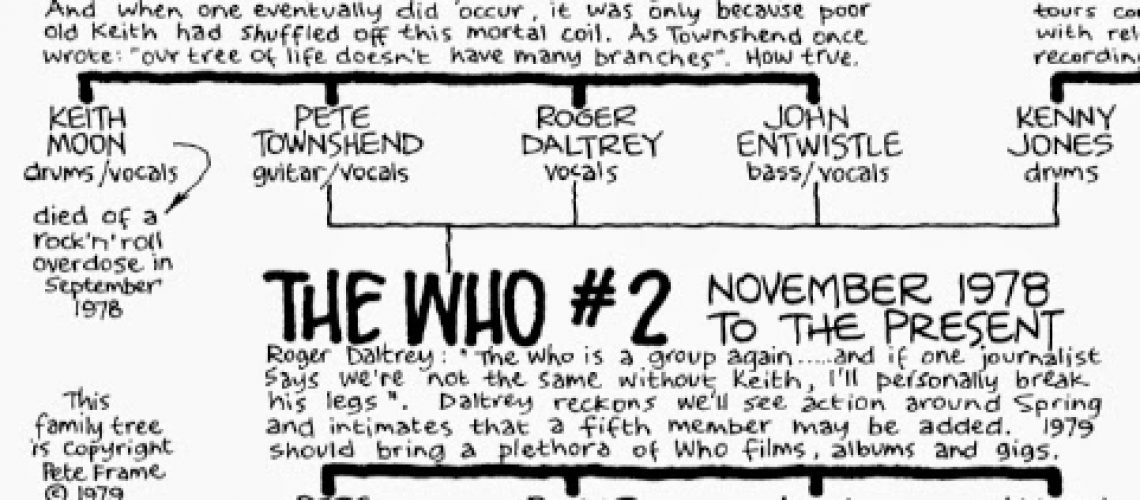
Unsurprisingly, the places where the book truly sings are where Lenny can add his personal insights, like the NYC ‘75 chapter, which I would have liked to read an entire book on. But! (This is very important!) - in the book’s introduction, Lenny states: “You can’t be everywhere at once. Sometimes it doesn’t matter if you’re there or not.” That is why I go stand in deserted parking lots that used to be rock and roll clubs. I have felt this very cosmic universal thread sitting in the front row of the upper balcony of the Apollo for the first time, watching Al Green, or finding the Grande Ballroom my first trip to Detroit, or going to stand on a train platform in a London suburb on a rainy Saturday. It’s a tradition Lenny maintained for decades as his role as aide de camp of the Patti Smith Group, where there absolutely have been these kinds of interstellar connections made onstage since the very beginning.
It’s a great book. You should read it.
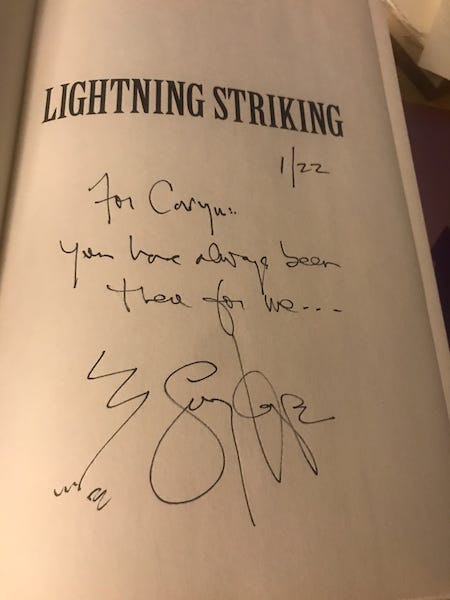
You can order an autographed and/or personalized copy of the book by calling Carroll & Carroll Booksellers, Lenny’s local bookshop: 570-420-1516. (Of course it’s an analog activity. Pick up a damn phone. )

